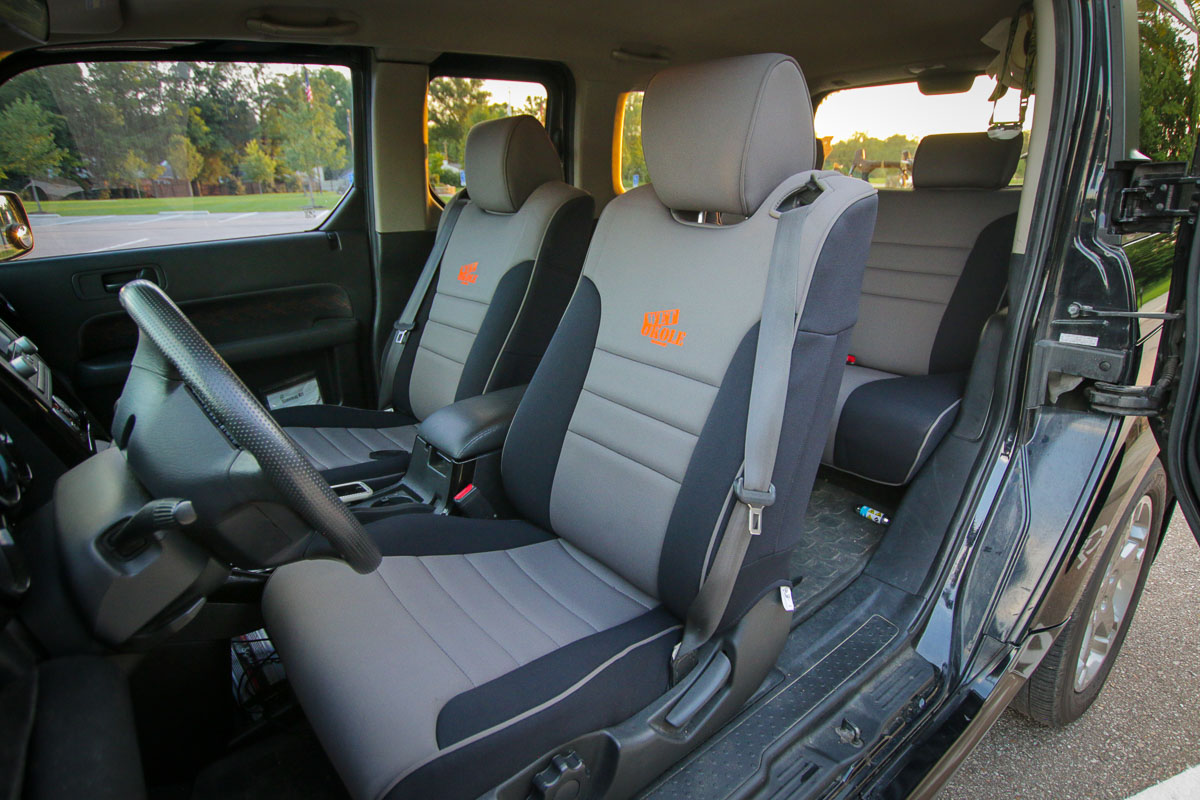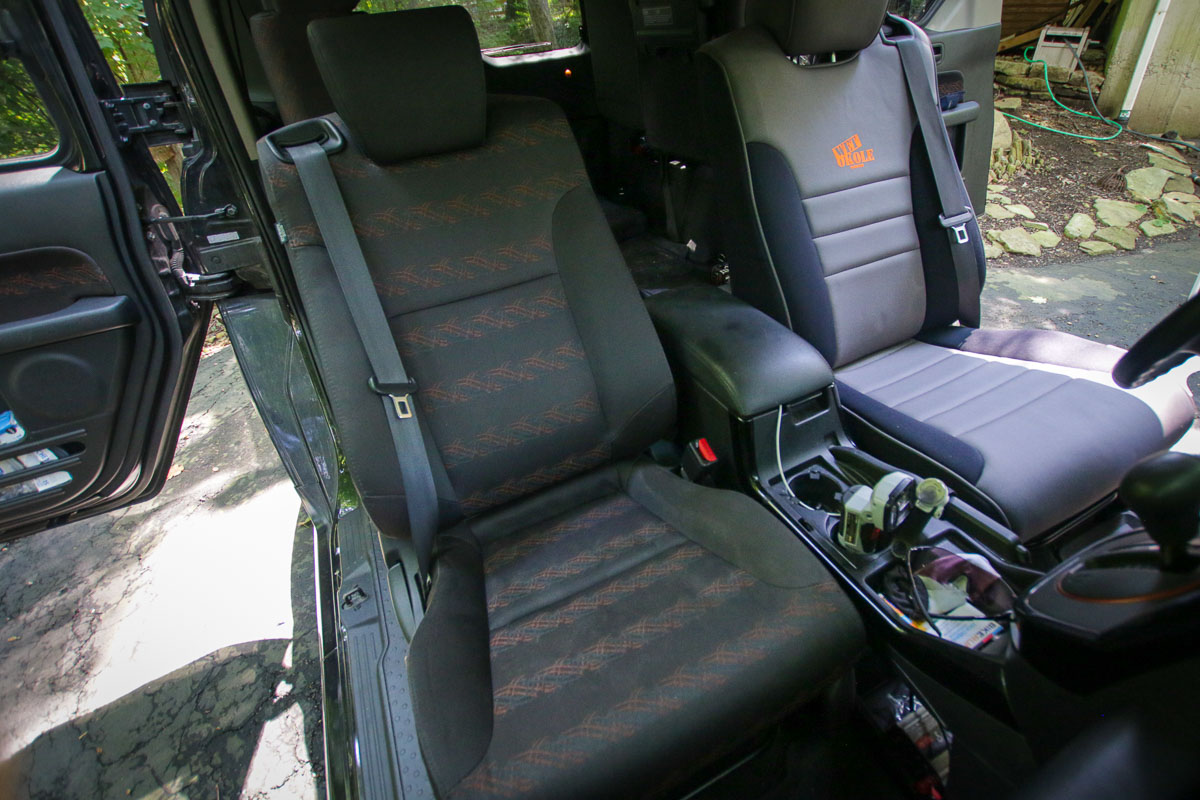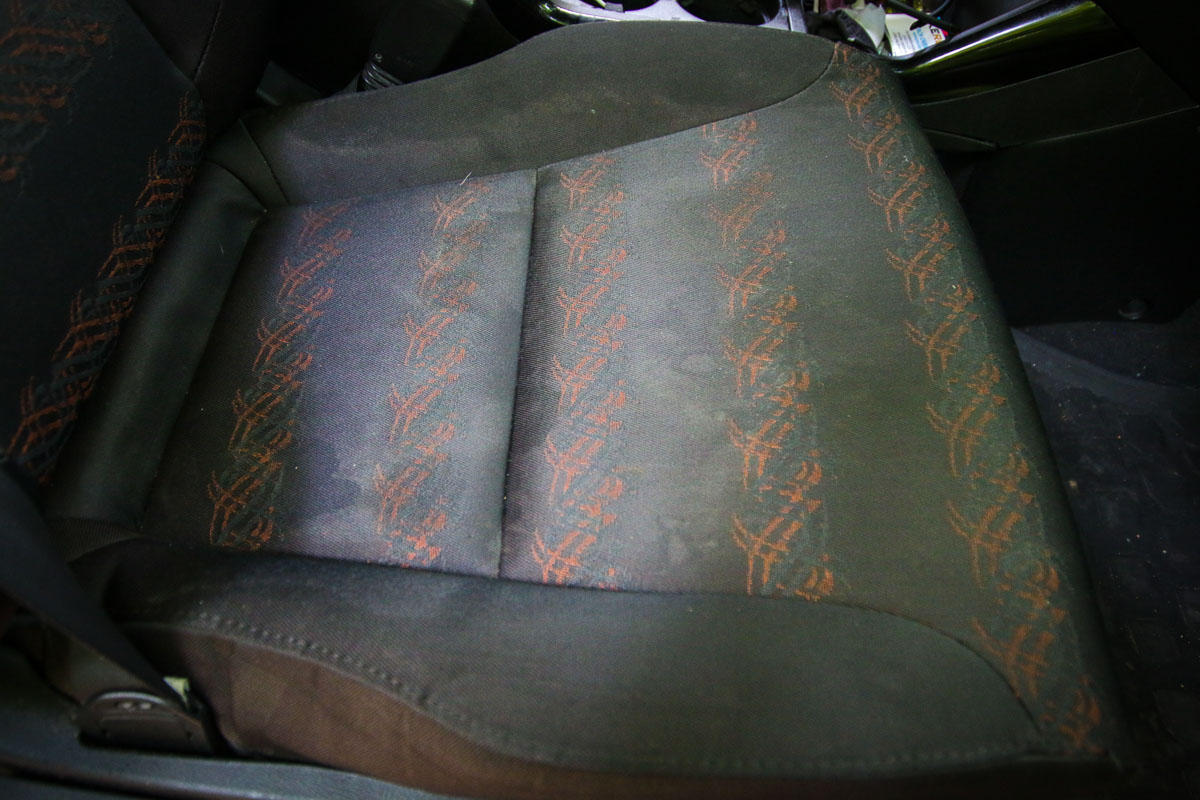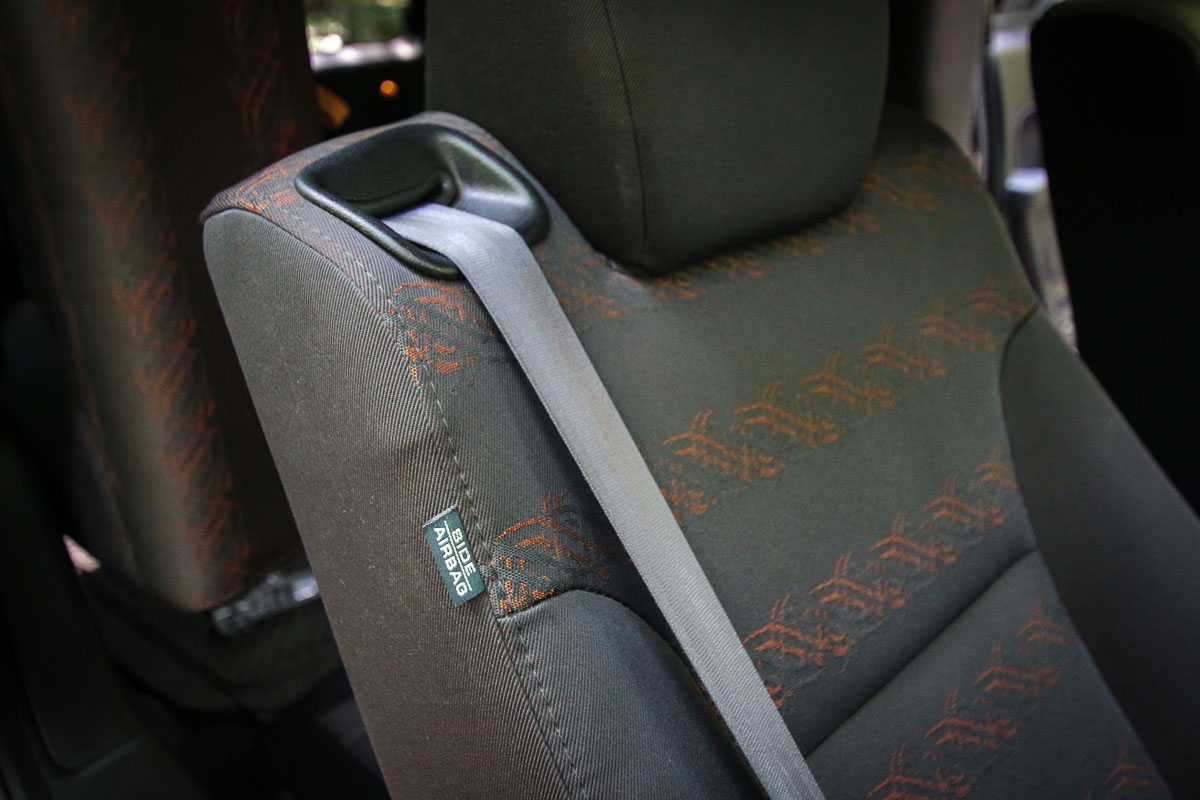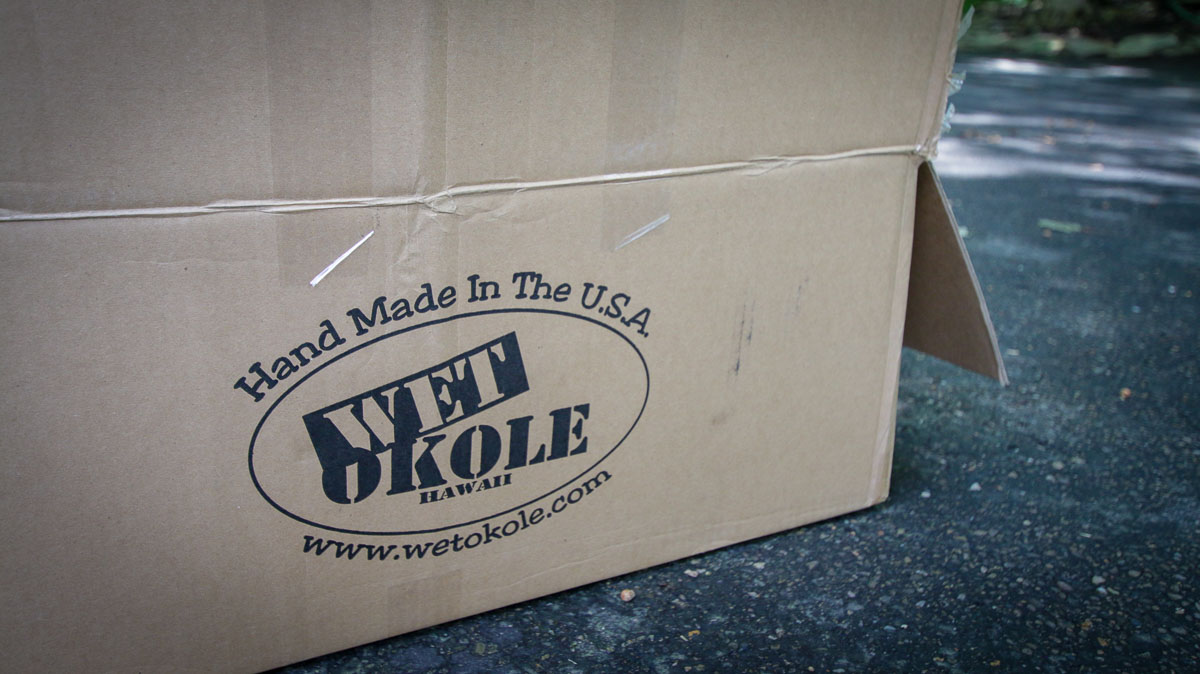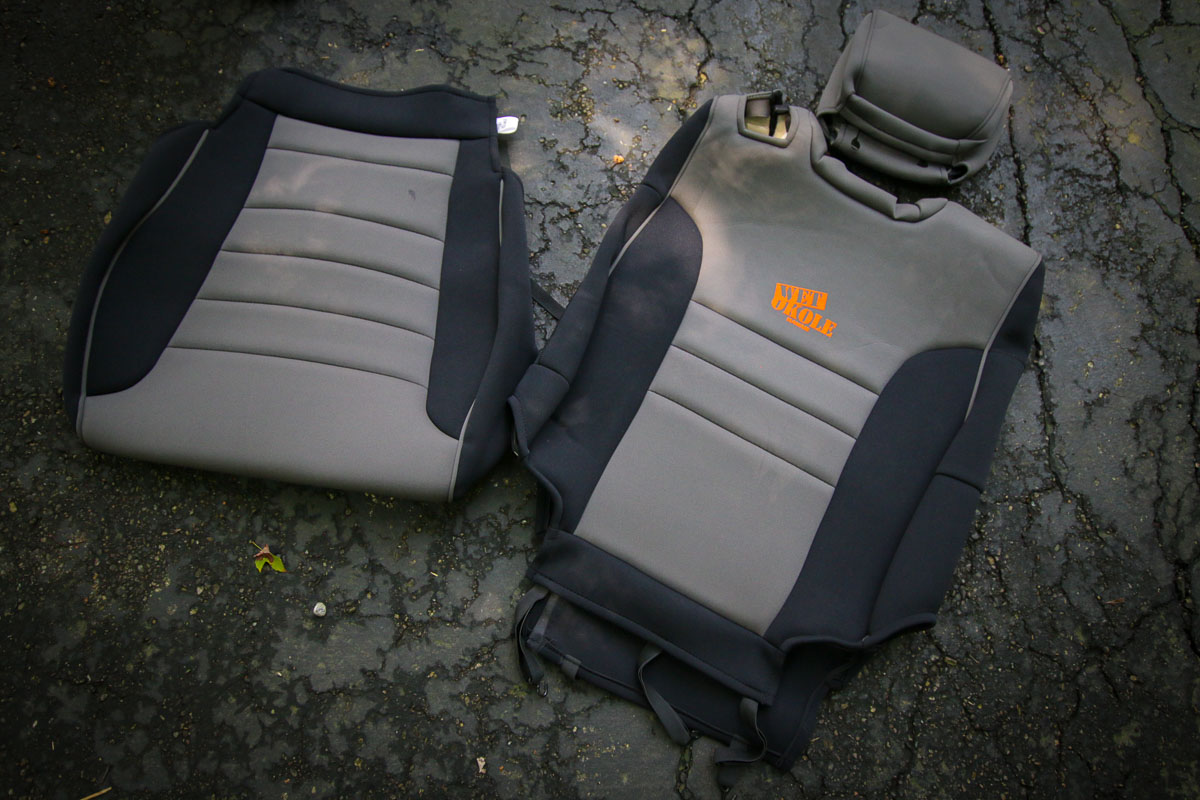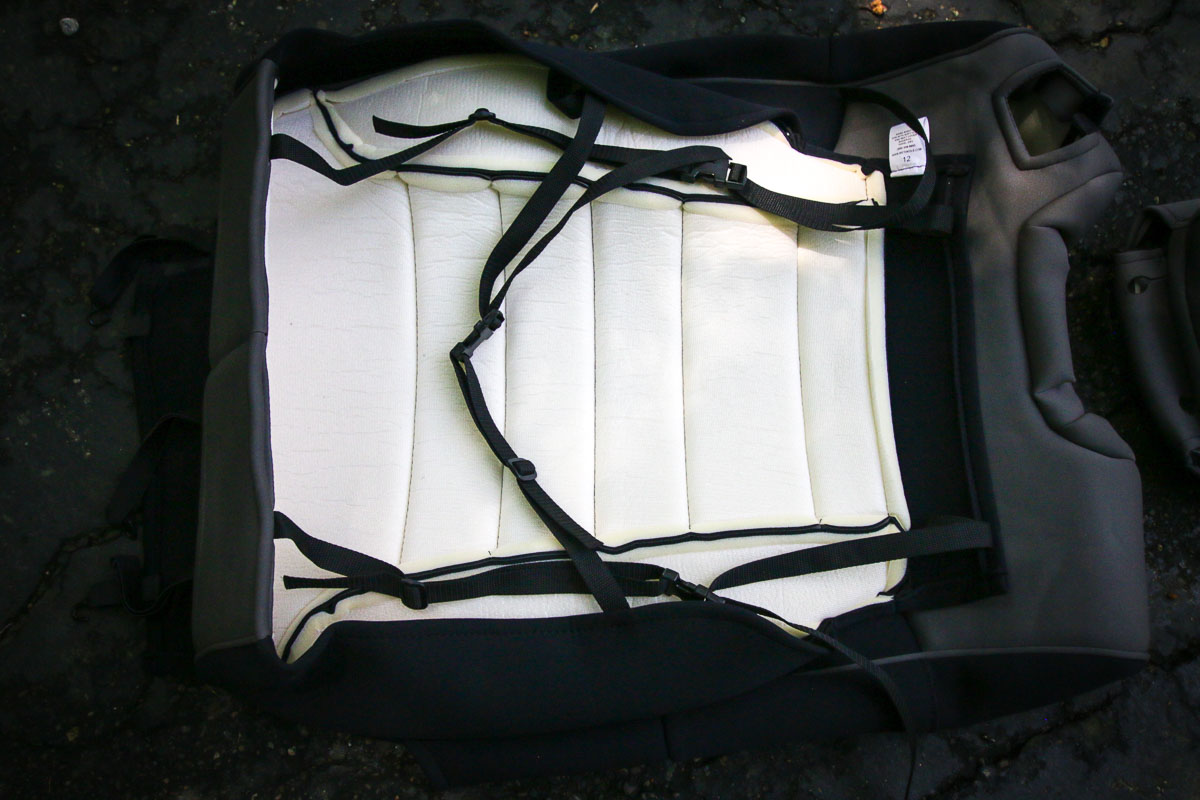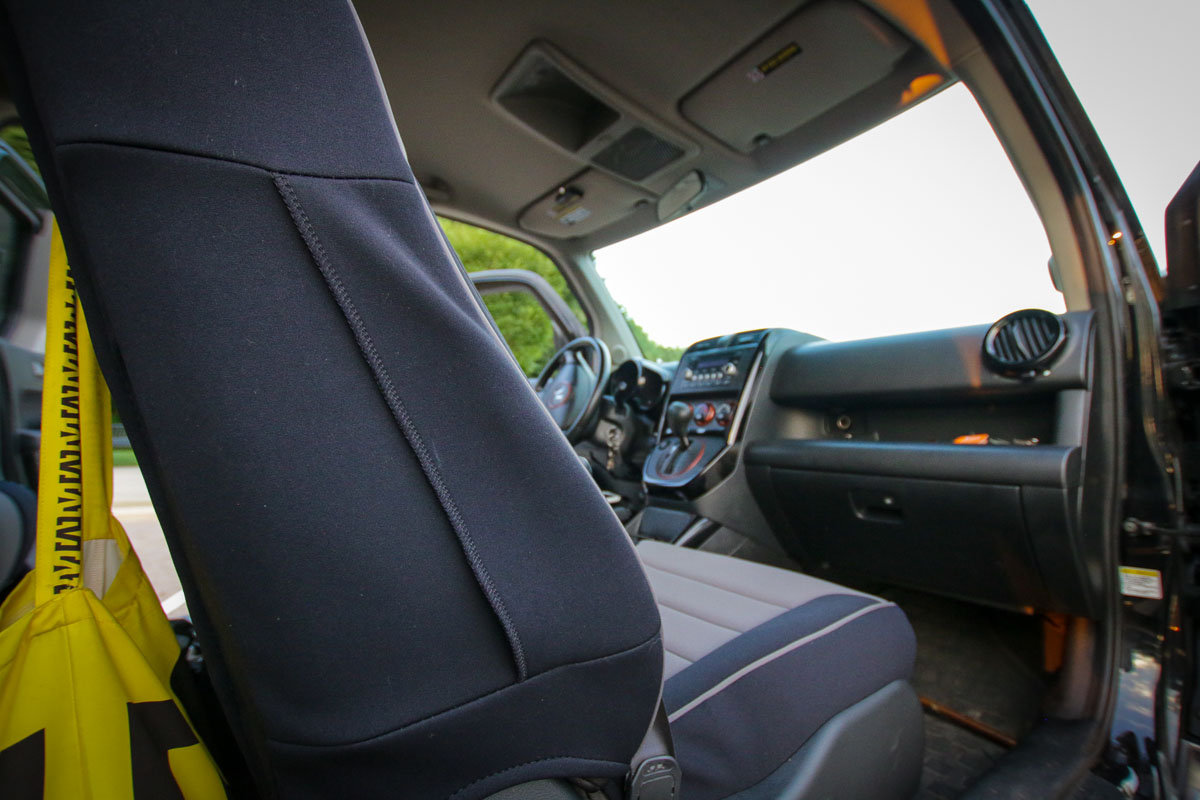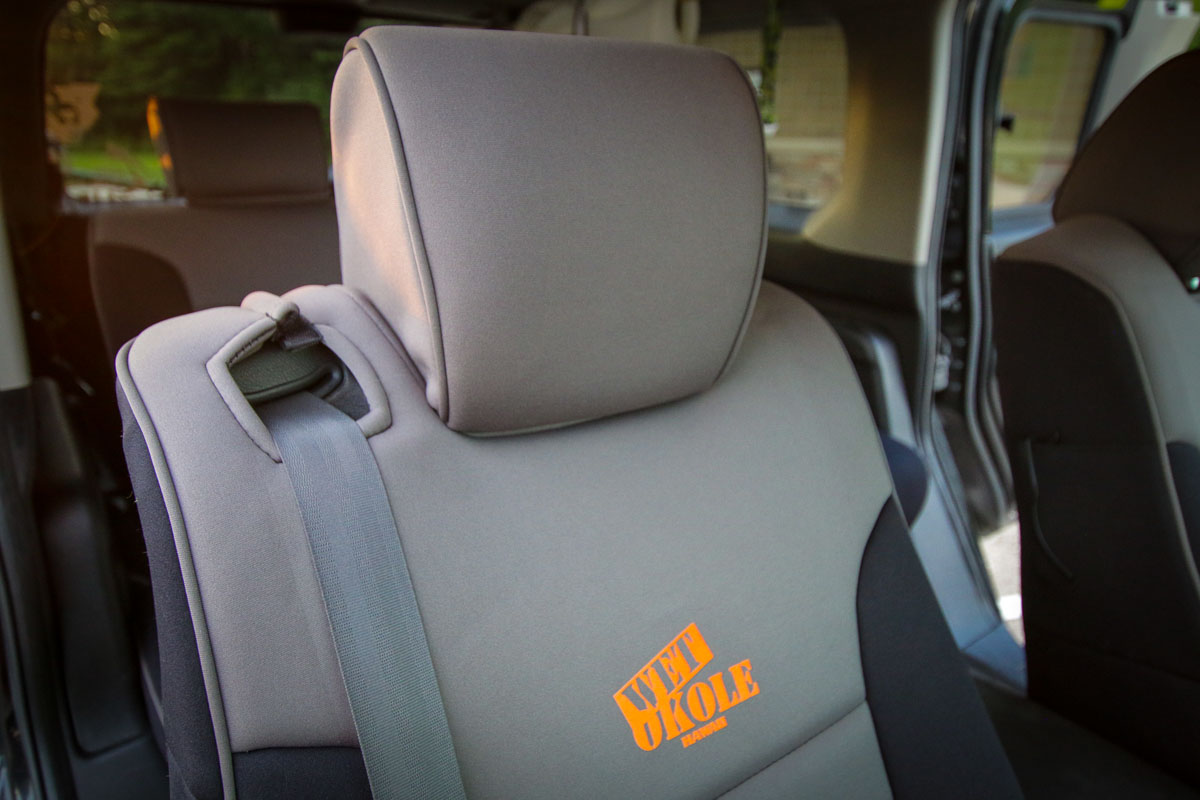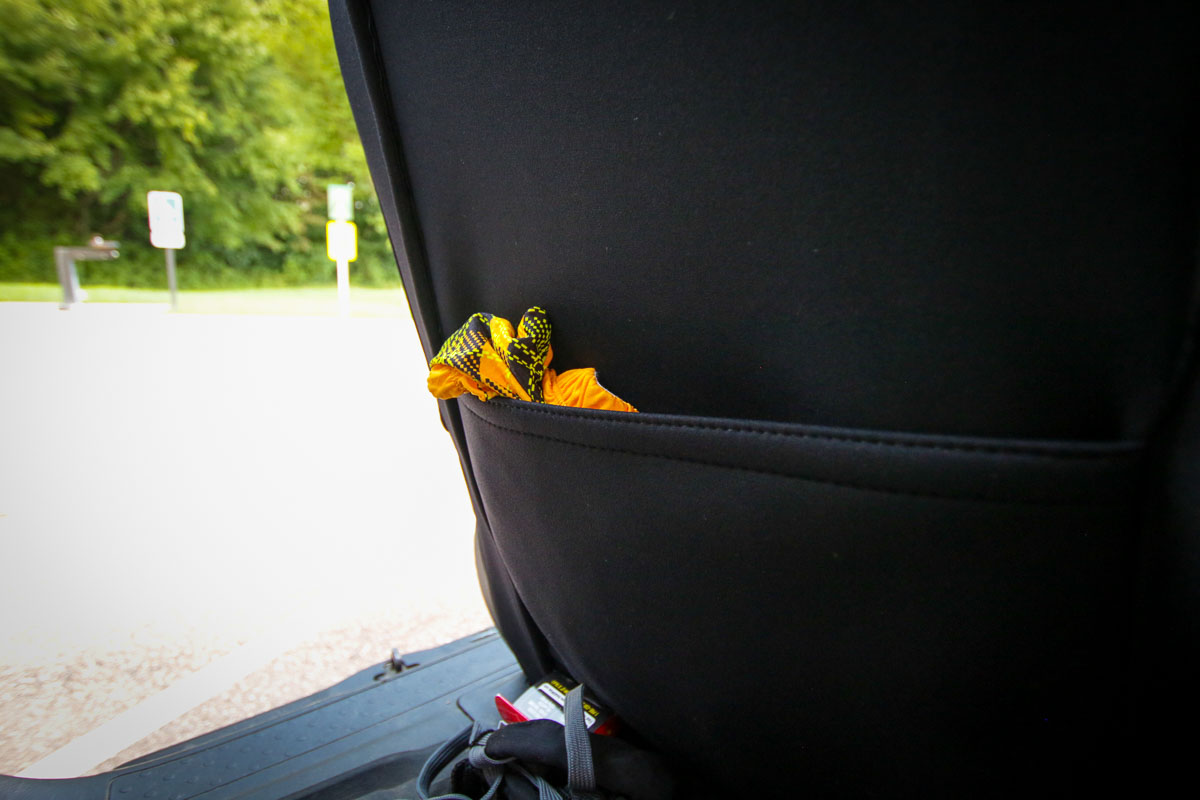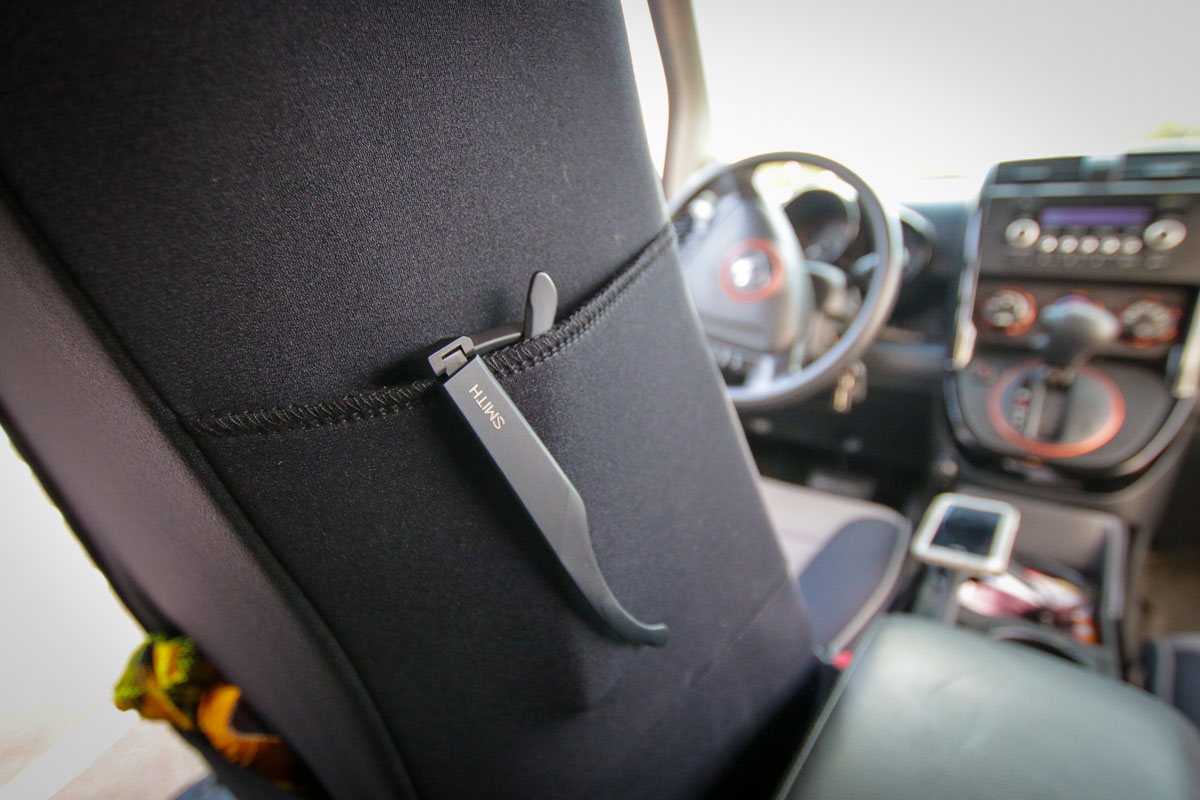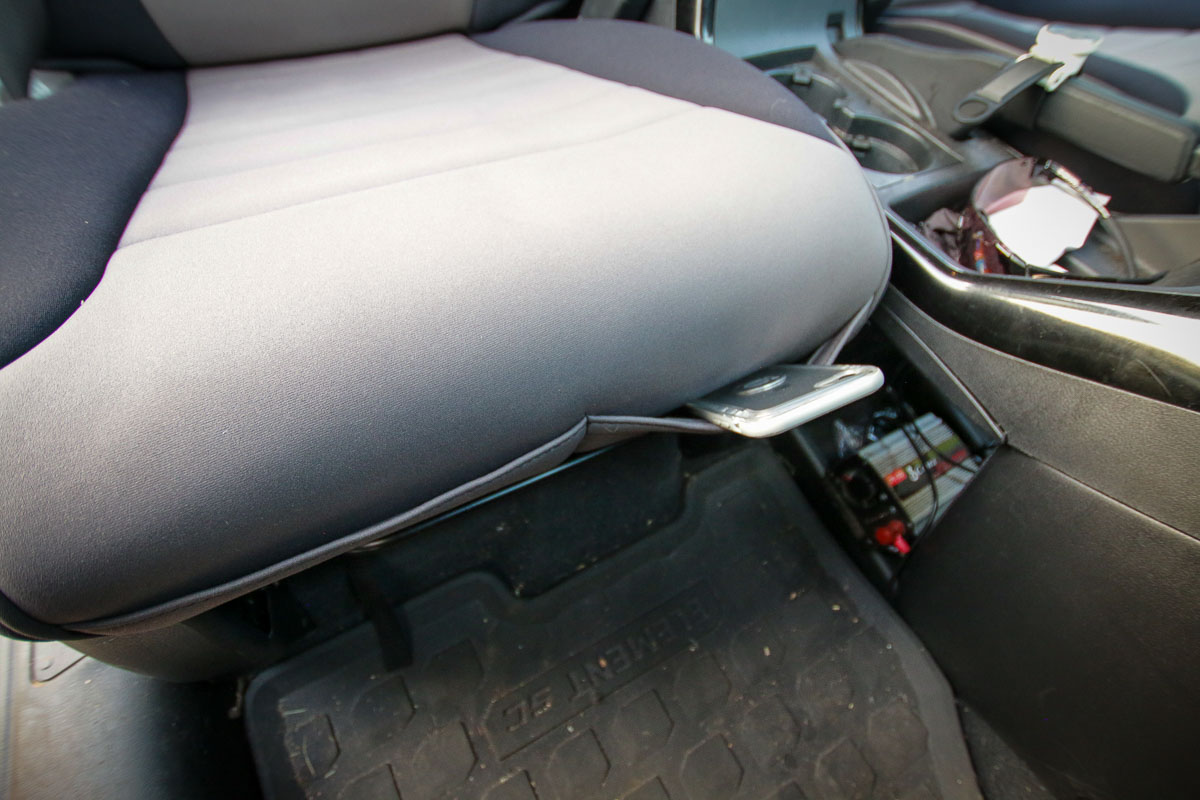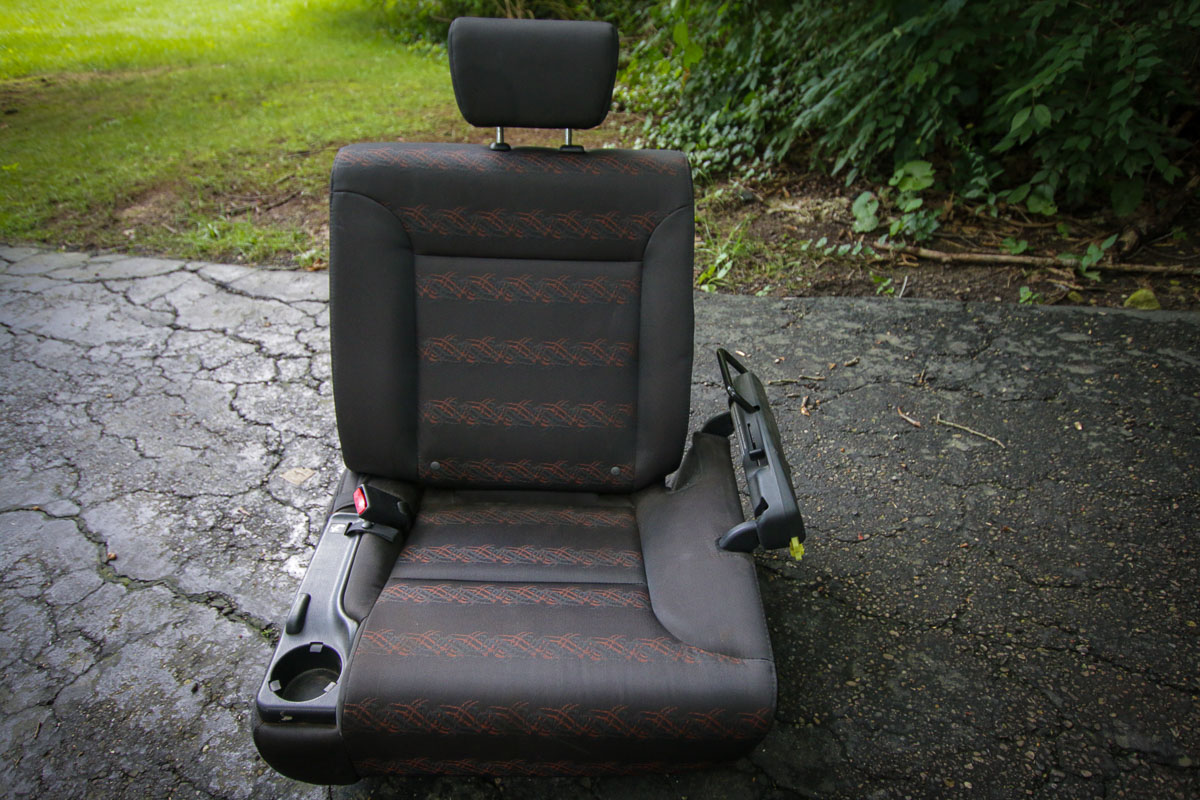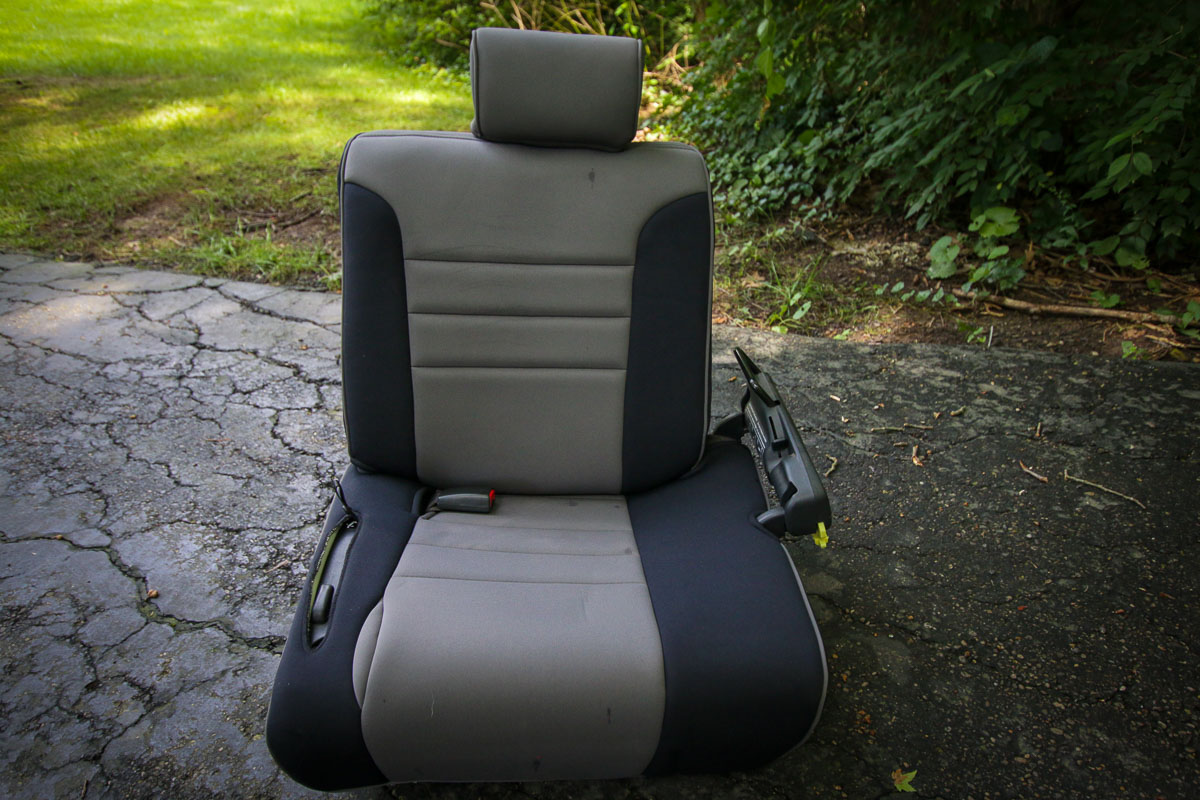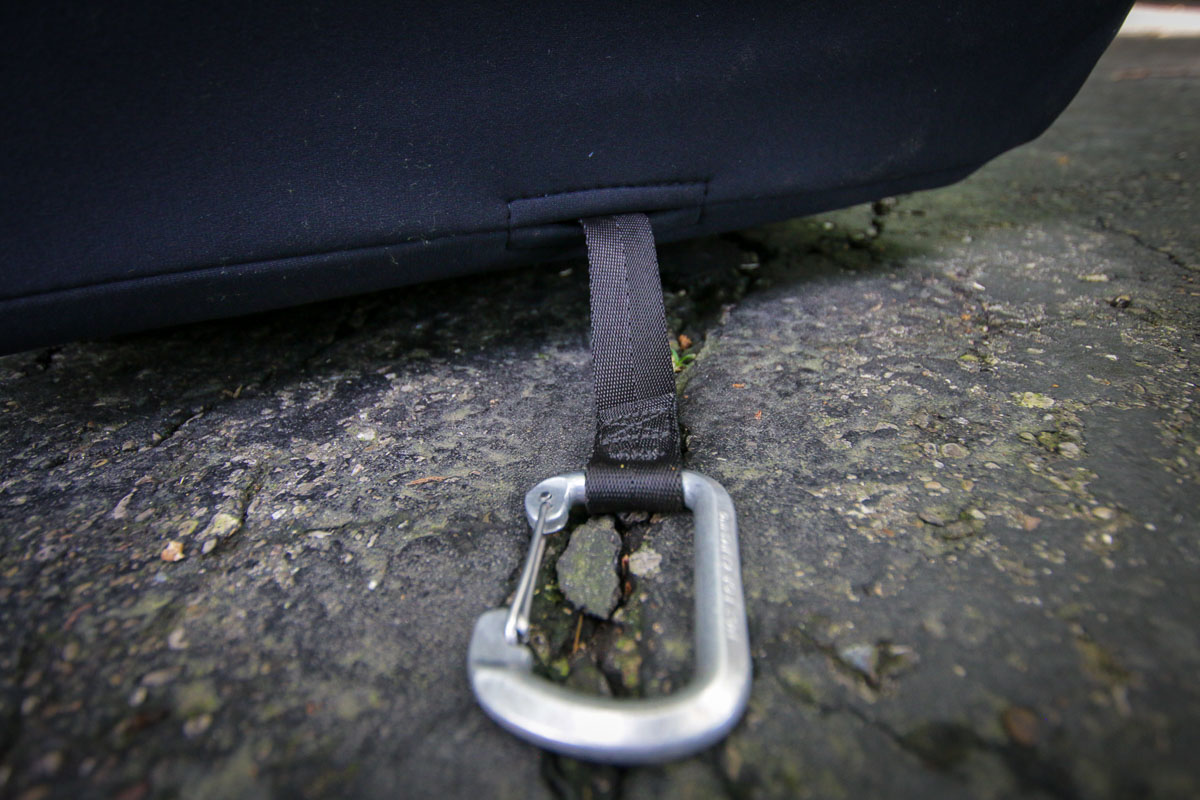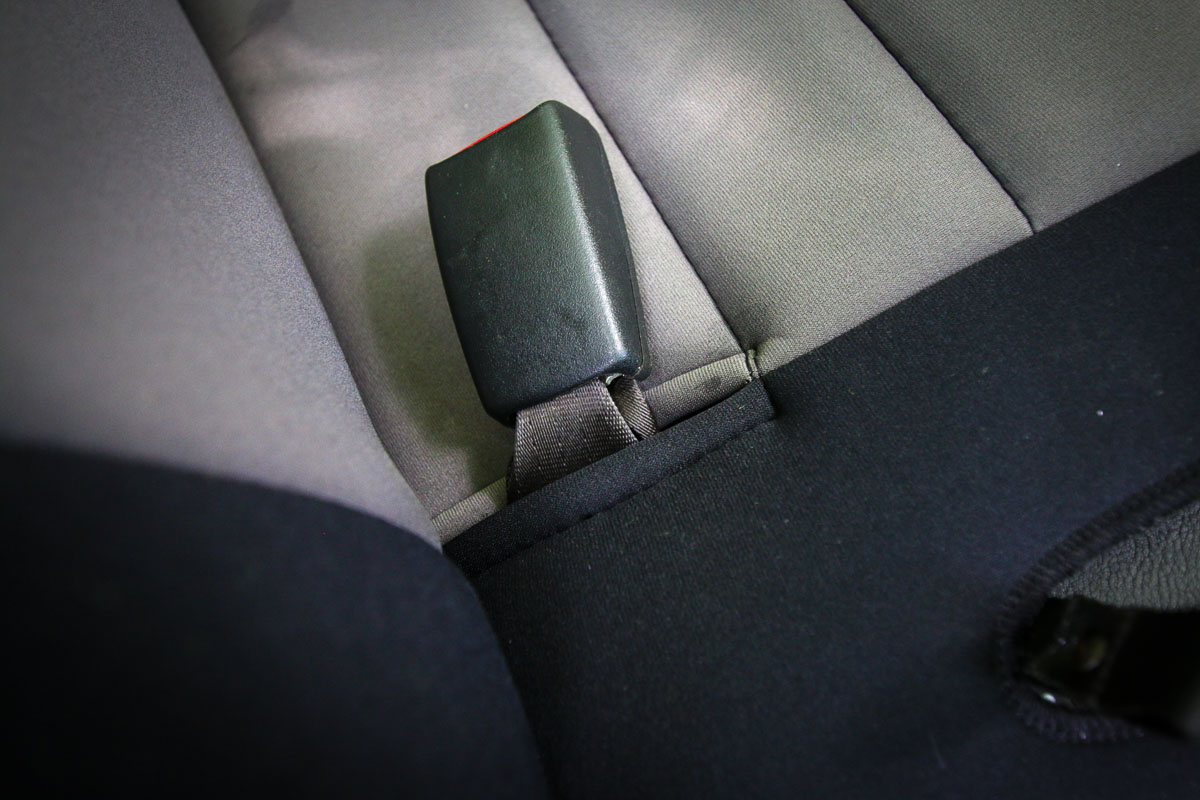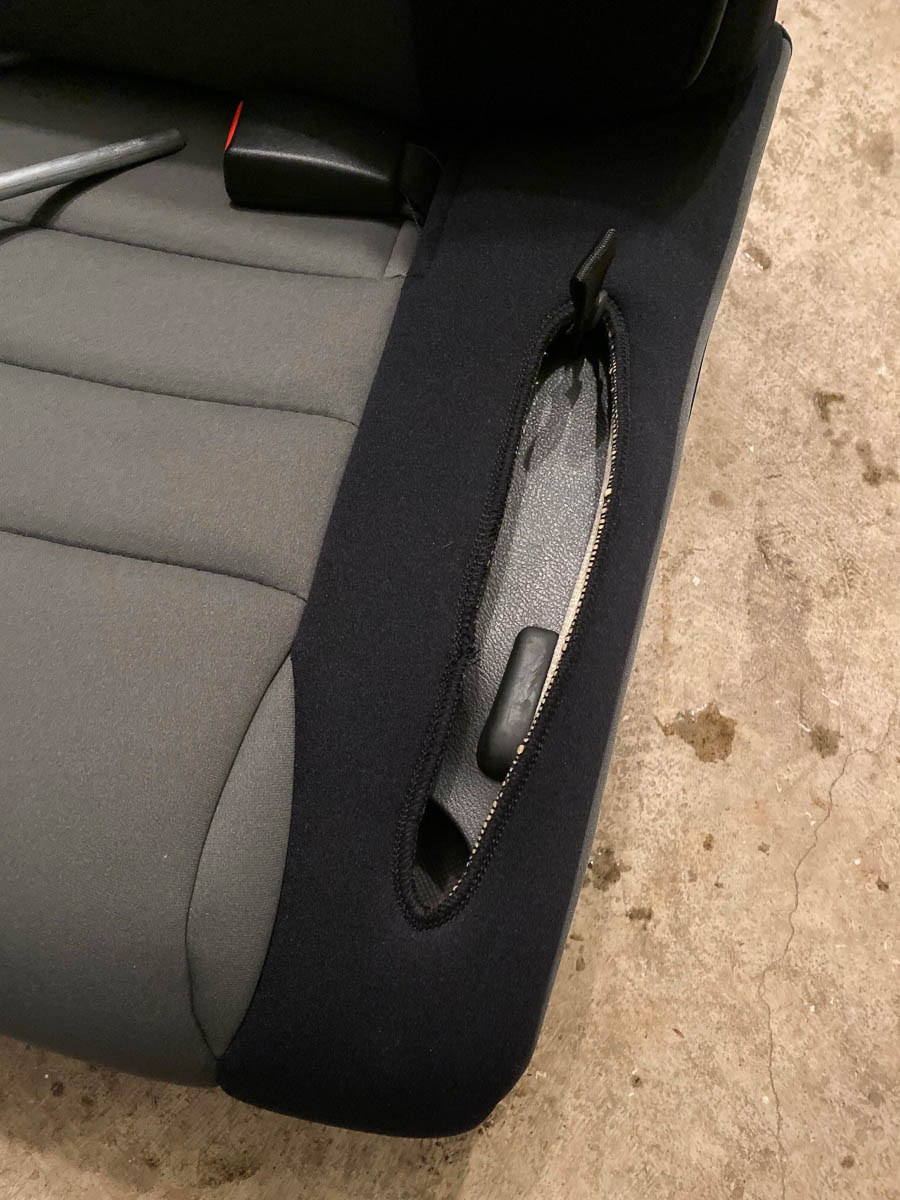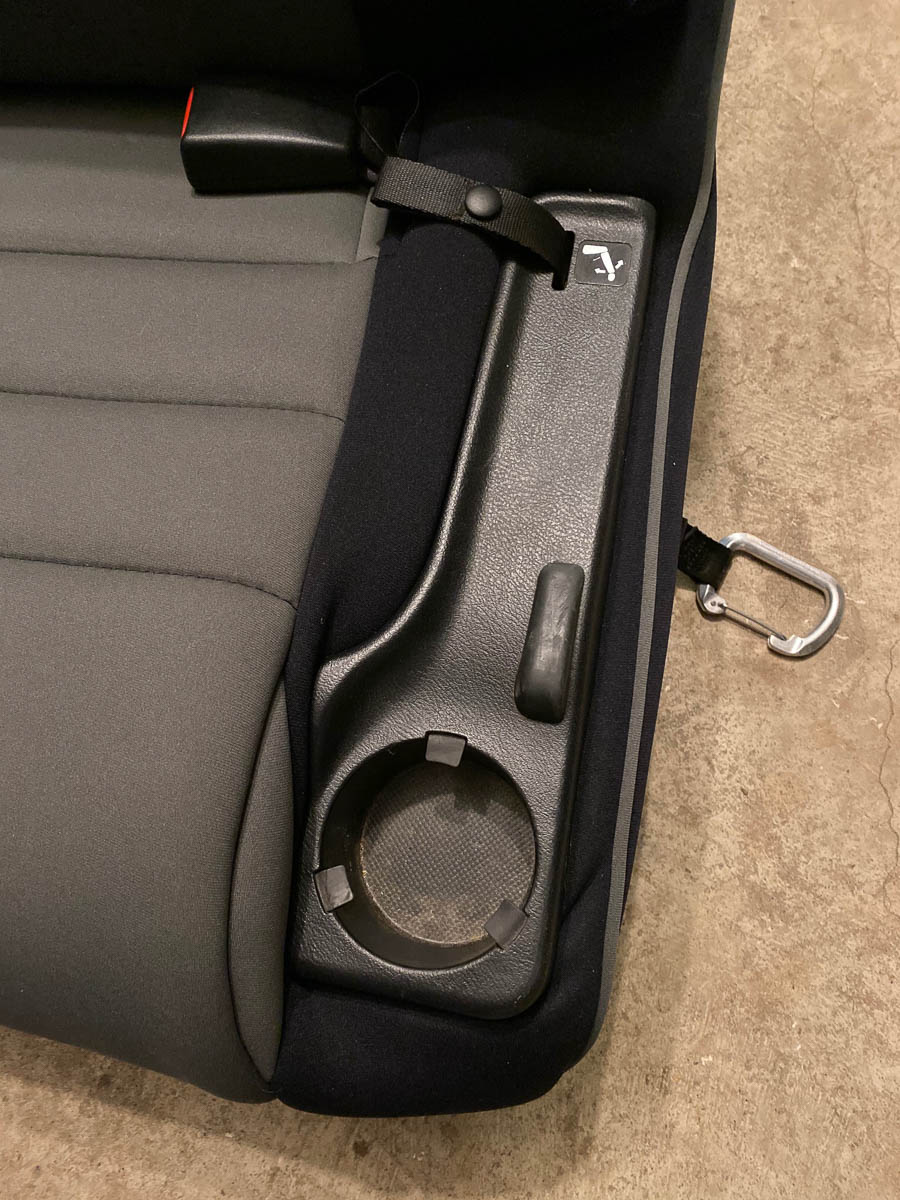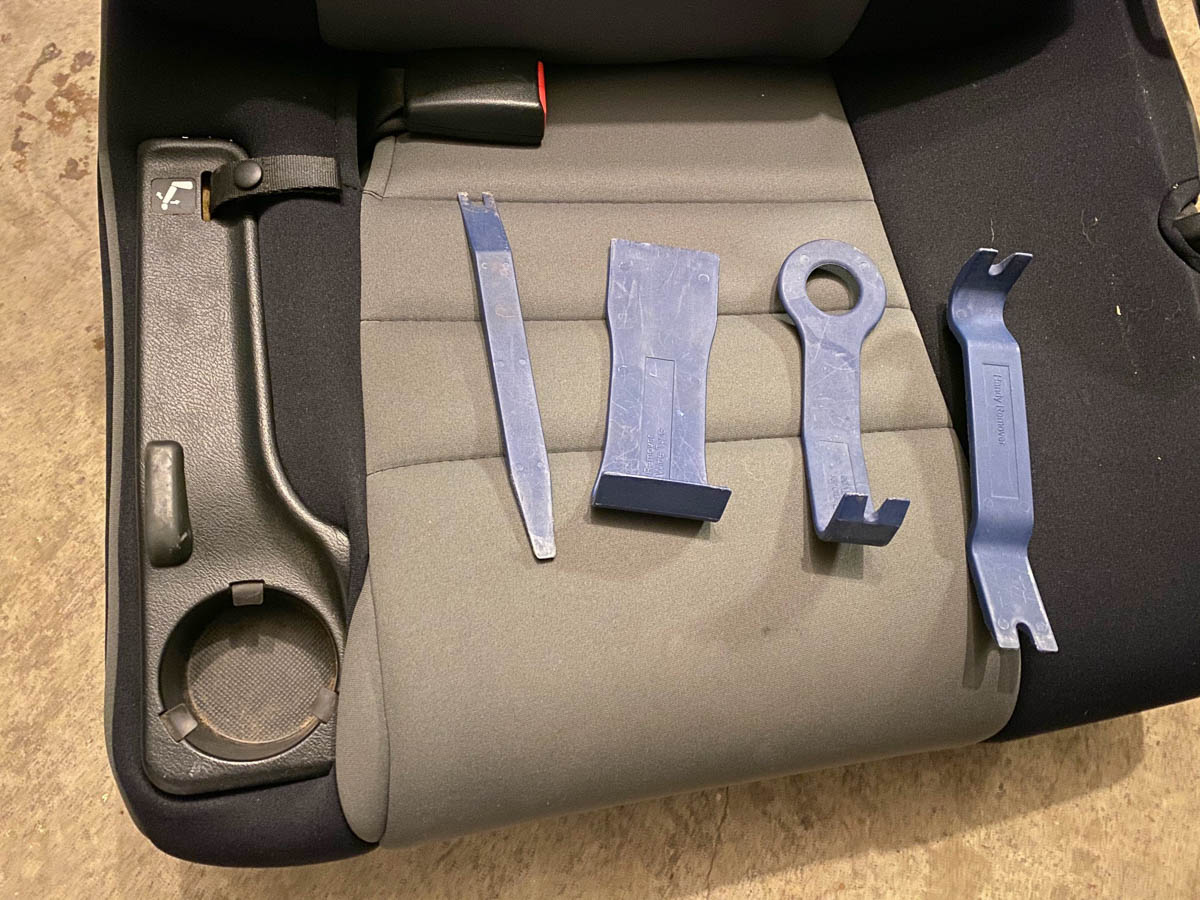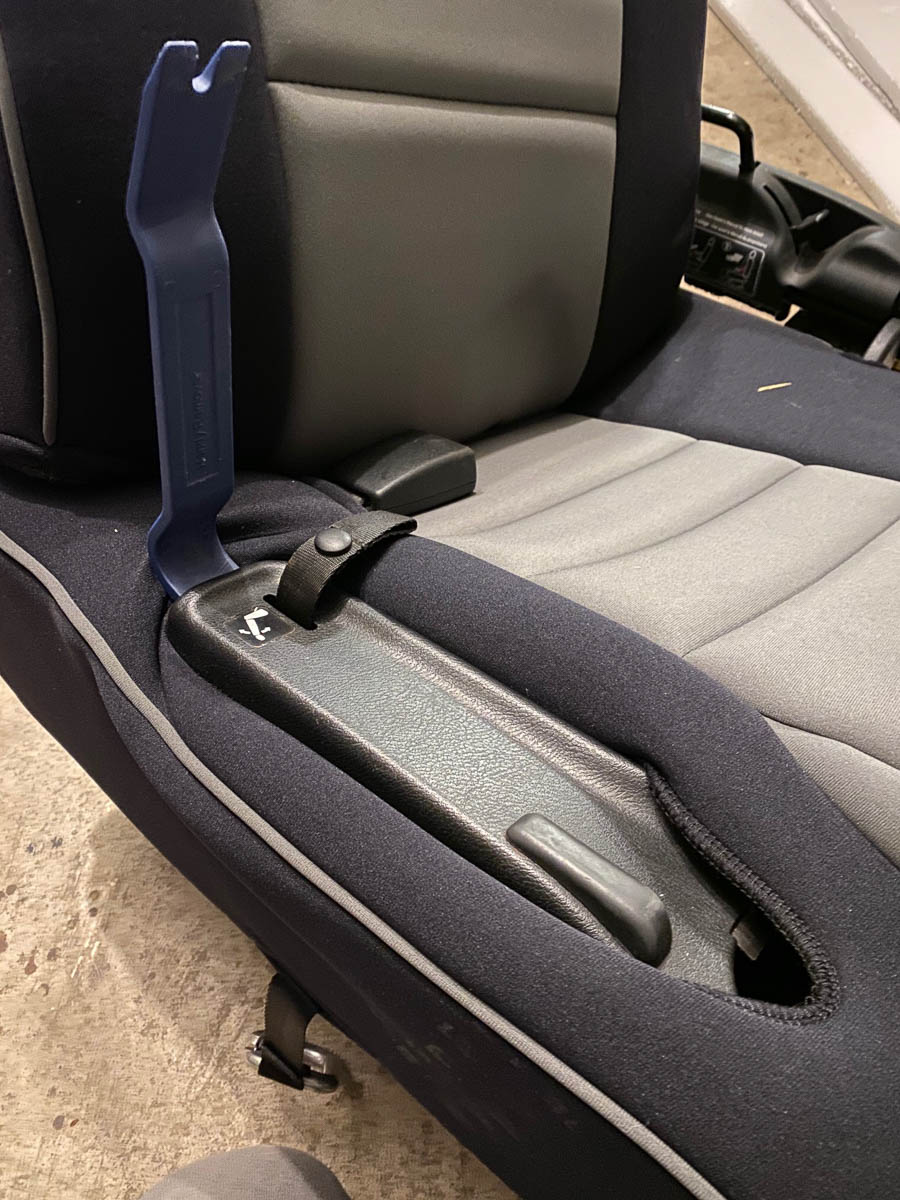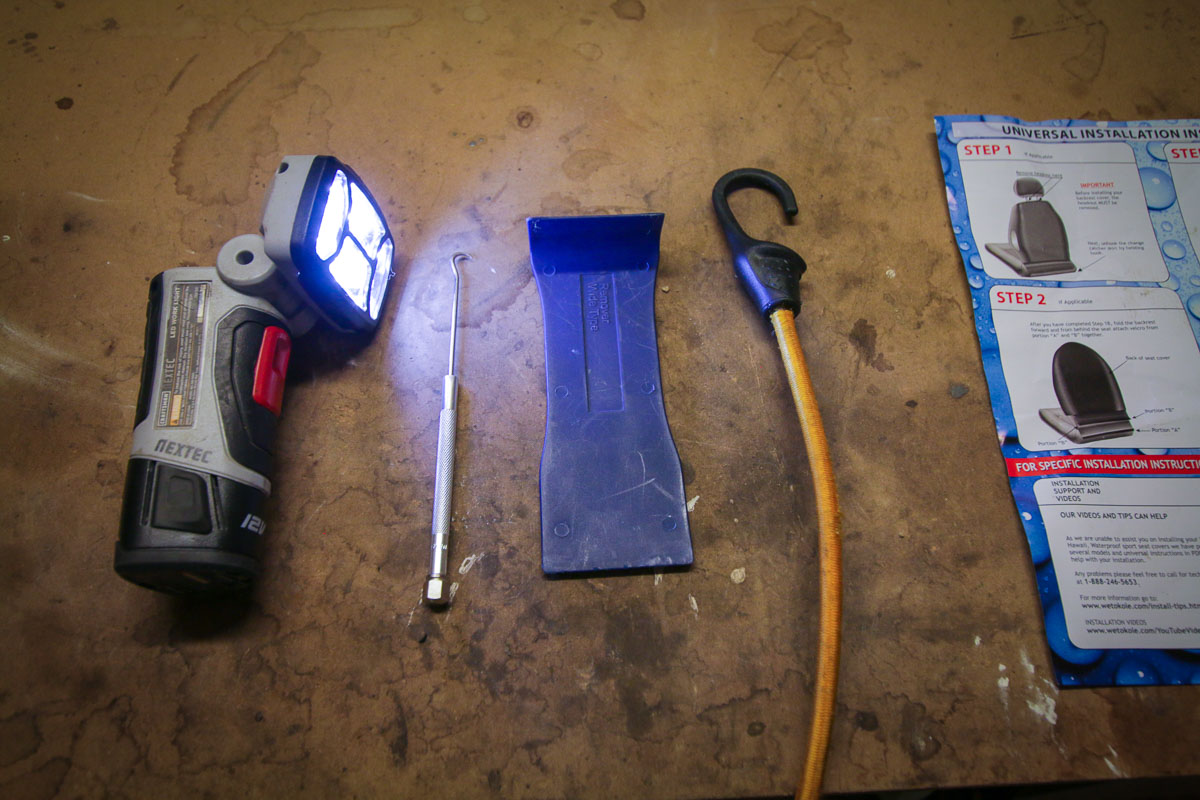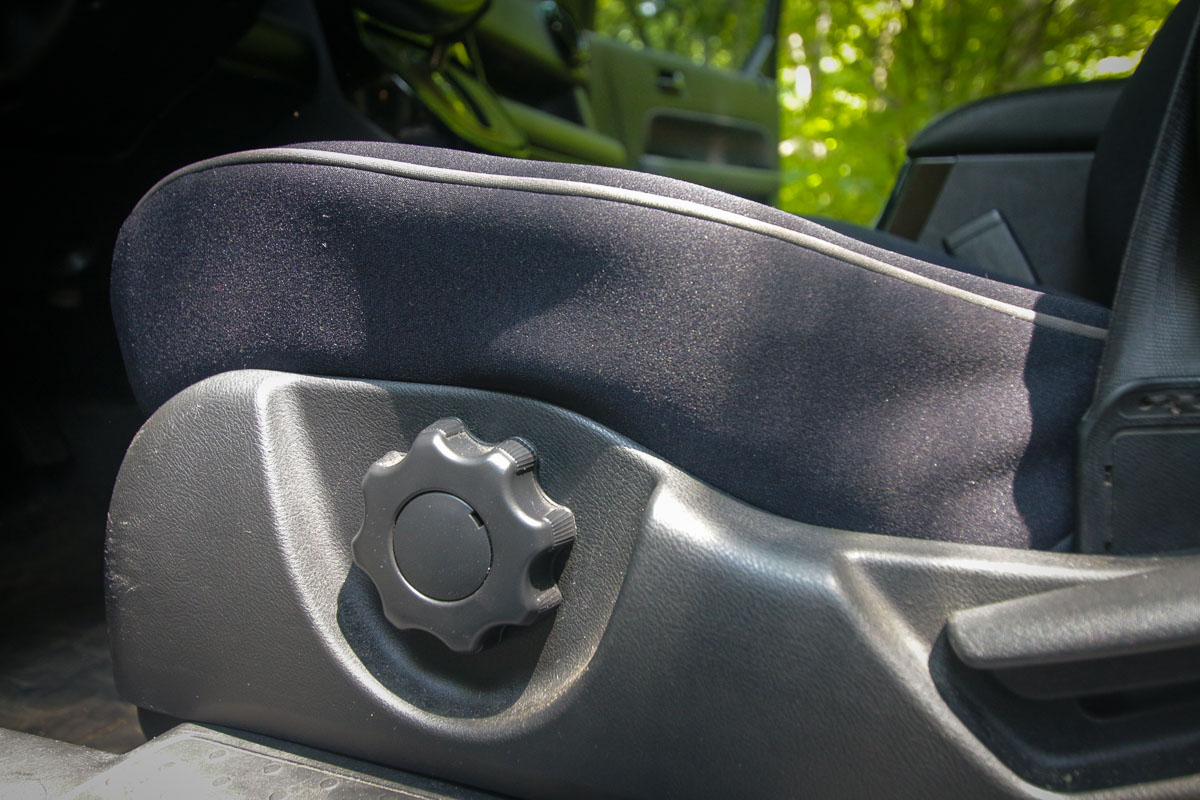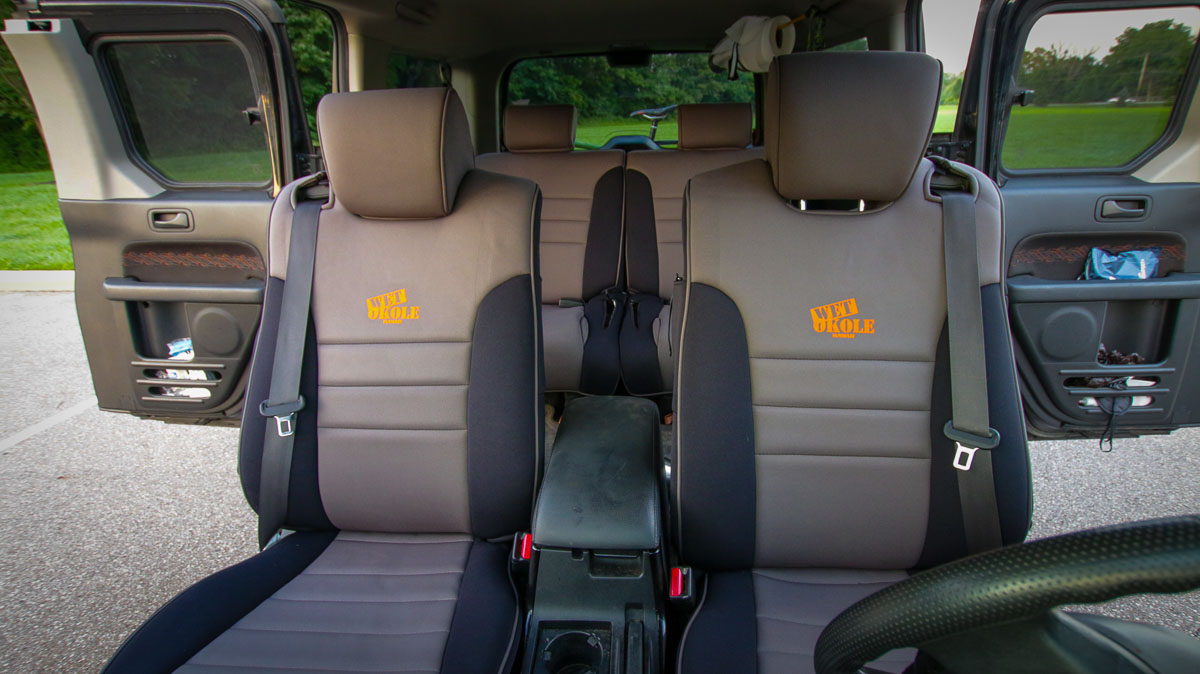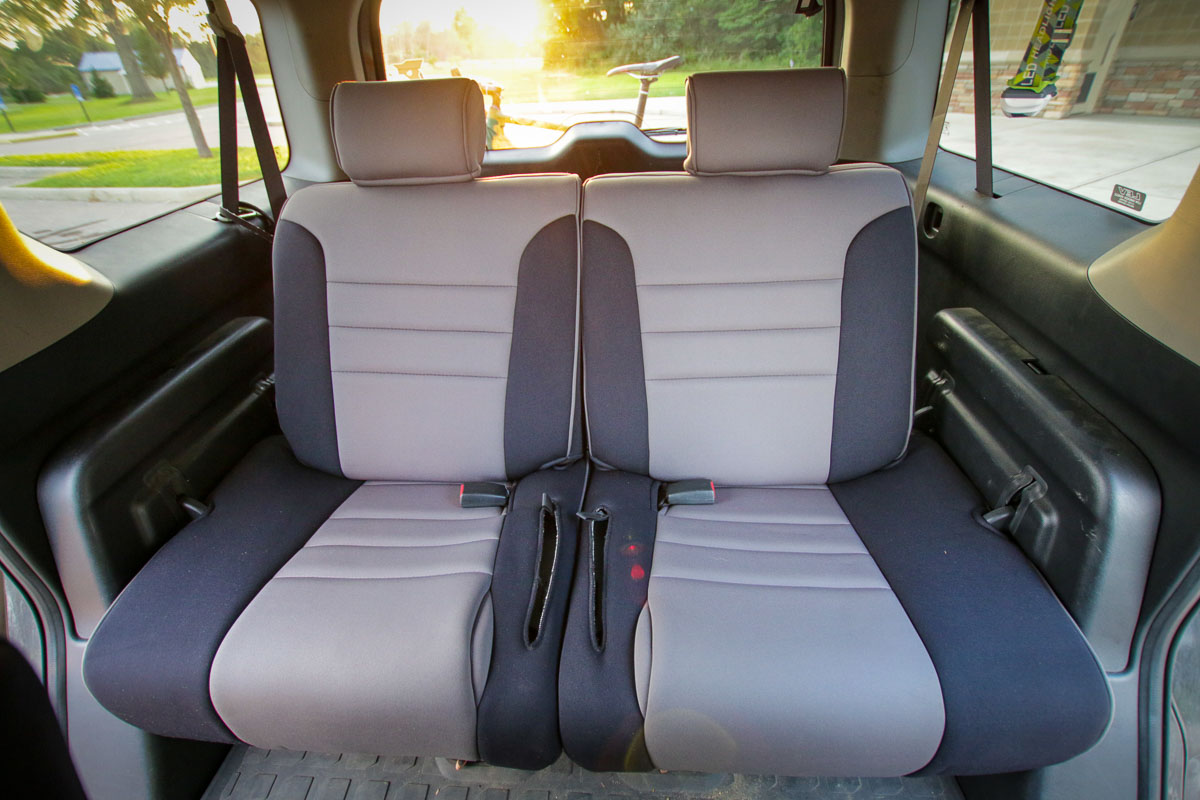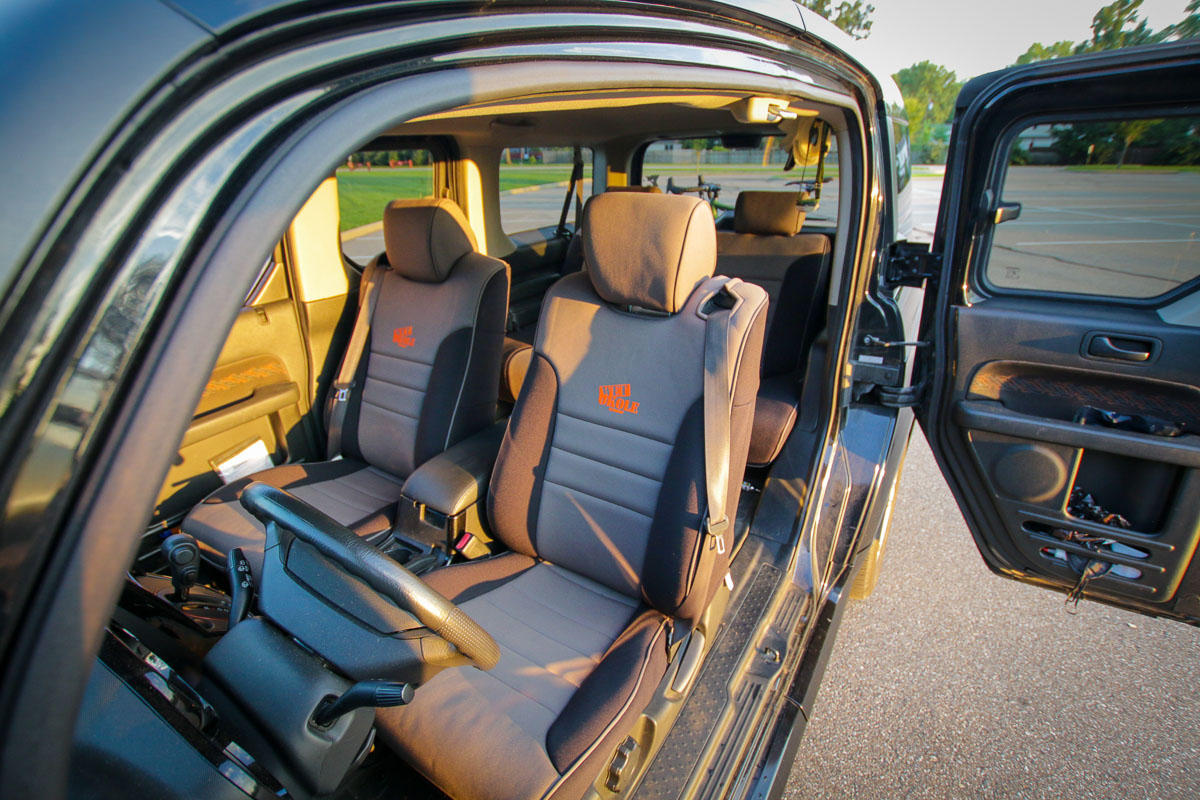I was reminded on a recent trip to Asheville, just how popular the Honda Element is with cyclists. Looking around, a third of the parking lot I was in was filled with Honda’s much loved, and often misunderstood, adventure-mobile. Judging by how many you still see on the roads, and how well they’re keeping their value, Honda would be wise to come up with a modern replacement (and not that terrible orange concept that’s been floating around). But until then, those of us who are trying to make our e-box last as long as possible may be interested in a pair of seat covers.
This could be for a number of reasons. Maybe your seats are in pristine condition and you want to protect the upholstery from the residual mud, blood, and sweat that covers your body and clothes after a ride – no matter how well you clean off with a towel. Or maybe your seats are like mine – permanently stained and not in great shape to begin with.
To be fair, when I bought my Element, the seats were already stained. And in spite of the marketing materials that claim waterproof, easily cleanable seats, in real life that is certainly not the case. I will say, that they have help up pretty well over the years. I’ve owned this car for six years now, and the seats are only moderately worse than when I got the vehicle.
That all led me down the path of looking into seat covers. However, years ago when I started looking, I quickly realized that the Element has side curtain airbags inside the seat itself which seemed to make seat covers hard to find.
That is, until I stumbled across Wet Okole and their custom made seat covers. Originally from Hawaii, Wet Okole specializes in neoprene seat covers which are waterproof – perfect for surfers (or anyone living an active lifestyle). Now the company is based in Costa Mesa, CA, but their product remains the same. Each cover is custom made to fit the factory seats so they’ll fit most vehicles – not just Elements.
Construction
Generally, their seat covers are three pieces with one for each half of the seat and a separate head rest cover. Made from blended CR Neoprene or chloroprene, the seat covers get their waterproofing from the use of this material. The neoprene is then laminated on both sides with nylon to increase durability and prevent the rubber from reacting with the original leather or vinyl of your car’s seat if applicable. This nylon layer also makes the seat covers easier to install, and provides a better fit.
Underneath, you’ll find 1/2″ foam padding which increases seat comfort. I should point out that between the thickness of this padding and the neoprene itself, I was surprised to find out that it actually raised the height of my seat enough that my knee now hits my key chain with the keys in the ignition. It did not touch before – which isn’t really a problem, more of an observation.
To address the airbag issue, the Wet Okole seat covers have a flap built into the side of the cover that will let the airbag punch through in the event of a crash. Simple, but hopefully effective.
Custom fit and colors
Both of the front seat cover pieces have a series of straps to hold them in place, and the upper piece has a Velcro channel to fit around the integrated seat belt. Each seat cover is made to order which means that the fit is impressively snug, and that they match the OEM contours of the stock seats. It also means you can customize the look of the cover to your liking.
I decided to stick with the stock interior colors of my SC which include black, grey, and orange so I chose black side panels, grey center panels, grey half piping, and an orange logo. There are a number of colors and patterns to chose from allowing you to stick with the completely mundane, or go totally wild.
Options
Then there are options for additional storage in the front seat covers from rear map pockets, to side sunglasses pockets, and even front pockets for your phone or other small items. I wasn’t so sure I would use the sunglasses pockets since the Element has a whole storage box for shades up top, but I find myself using the little stash pockets way more than I’d thought.
The Element has a pretty funky rear seat, so I was impressed at how well the covers fit the rear more than the front. There are slots for the seat belts, caribiner clip on the bottom, and one for the reclining strap. The only negative is that the design covers up the cup holders – but if you’re trying to sleep on your seats this may actually be a benefit. Since the hard plastic cup holder sections are now covered in soft neoprene, it’s a bit less uncomfortable to sleep on (though I’d still recommend building a platform bed if you’re really trying to be comfortable).
Update: As it turns out, I was completely wrong about the fit of the covers around the rear cup holders. To be fair, there was nothing in the instructions about this part since the instructions are universal. It doesn’t seem possible for the small opening to stretch over the plastic insert, but with the right tools it can be done.
Like the plastic pieces up front, you’ll need trim tools to help pry the opening around the plastic, and help tuck the fabric of the cover underneath the edges of the cup holder piece.
I found it best to start at the back, and use the tool shown above as a sort of pry bar, with the tool placed under the lip of the plastic to start pulling the cover down around the plastic. It seems nearly impossible to do this without breaking some of the stitching around the opening, but eventually I wrestled both of them in place. When you’re done, it looks great and you have full functionality of the rear seat minus the fabric loop which I’ve always assumed is a hand hold for removing and installing the seats. The covers do have two openings at the back for access to the child seat attachment points though.
Installation
Installation is pretty straight forward, but don’t expect it to be easy or quick. At least with the Element, there is very little room under the seat which makes it very difficult to get the straps though. There are also a bunch of sharp things underneath like poorly cut zip ties on the wires, and the ends of springs, so be careful and wear gloves when possible (you will cut up your hands in the process, but I managed to keep it to small surface nicks).
To make the process easier, the tools above will help – especially the plastic trim tool. This really helped to tuck in the edges into the plastic base of the seat which helps give it that factory look. I’m putting together an installation video which should be up soon.
Once everything is installed, the covers look great and haven’t moved around at all. They do make it a little tight between the two rear seats when you fold them down, but it’s not an issue.
First Impressions
So far, the seat covers have held up very well – they still look brand new after a few months of abuse. The covers have definitely added some cushion to the stock seats which wasn’t something I was after, but I think they are slightly more comfortable for long trips. Wet Okole says that their covers won’t heat up in the summer or get cold in the winter which is a nice touch if your Element spends a lot of time parked outside. I was a little worried that they might be too hot and cause sweaty back syndrome, but they’re no hotter than the stock seats in that regard.
In hindsight, if I did it again I probably would order a darker color for the center section, but so far it hasn’t made a difference. I plan to check back in with these long term to see how they hold up, but if I ever had an issue, Wet Okole will repair any panel for $15 at a time. They also sell a cleaning kit to keep the covers looking fresh over time.
That’s good news since these aren’t exactly cheap. The front seat covers for the Element start at $289, while the rear covers add $315. The covers shown above also have dual OEM seat back pockets ($30), single seat wallet/cell phone pockets ($12), and dual sunglass pouches ($16). Other options that I didn’t get include seat heaters, adjustable lumbar support, and integrated pet safety leashes.
That puts the grand total for these covers at $662. While that may be a lot for some seat covers, the impressive fit, performance, and custom looks of the Wet Okole covers may very well be worth it – particularly if your current seats are looking worse for wear.
